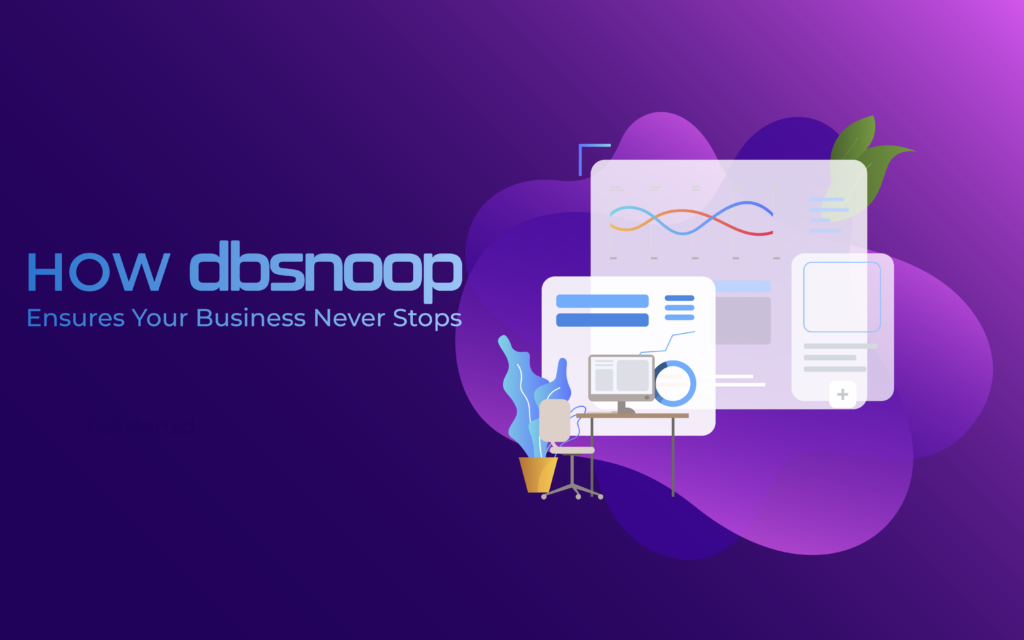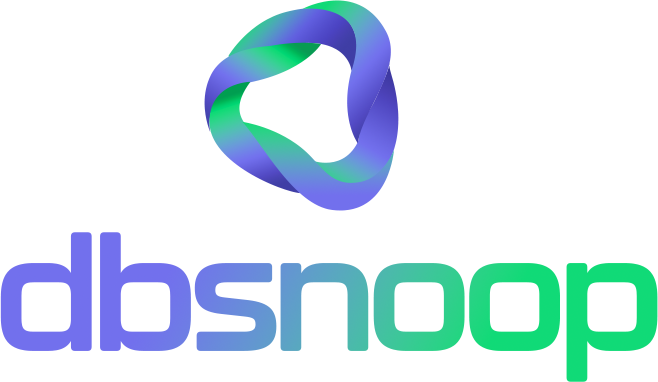

The concept of “business continuity,” for many companies, is still stuck in a disaster recovery mindset. It evokes a checklist of reactive mechanisms: backups, failover plans, redundant data centers. While these elements are crucial, they share a fundamental flaw: they are all designed to respond to a catastrophe that has already happened. True continuity in the digital age is not defined by how quickly you recover from an outage, but by your ability to ensure the outage never occurs in the first place.
When your system “stops,” whether due to explicit downtime, excruciating slowness, or a data integrity failure, the business stops. Revenue ceases, operations freeze, and customer trust evaporates. Protecting an asset that generates millions requires a paradigm shift: from a recovery mindset to a prevention architecture—which can be achieved with dbsnoop.
Analyzing Failure Modes: Downtime, Brownout, and Integrity Failures
Over-reliance on disaster recovery mechanisms creates dangerous blind spots, as they are designed only for the “blackout”—the total and obvious failure. However, the most common and corrosive forms of stoppage are much more subtle.
The “Brownout” from Performance Degradation: This is the failure where the system is technically online but so slow that it becomes functionally useless. For the customer, the experience is that of a broken system. “Brownouts” do not trigger failover alarms. They simply “bleed” revenue and customer satisfaction silently, often for hours, while IT teams, looking at “green” uptime dashboards, struggle to understand the cause of a widespread slowdown.
Operational Paralysis from Internal System Failure: Your internal systems (ERP, WMS, CRM) are the backbone of your ability to operate. A performance failure in them doesn’t generate a 404 error on the website, but it prevents the company from fulfilling its promises. Orders may be coming in, but they cannot be processed. It is an internal stoppage that creates an external liability, resulting in delivery delays and angry customers.
Data Integrity Failure: The most insidious form of stoppage. The system is fast, online, but the data it serves is wrong due to a failure in a nightly ETL process. The business doesn’t stop operating; it stops operating based on reality. Strategic decisions, marketing campaigns, and financial projections are all built on a foundation of fiction.
The Financial Impact of Downtime: The Cost of Reputation, Productivity, and Innovation
To justify a prevention architecture, one must understand the total and non-linear cost of a stoppage. The “revenue per hour” metric is just the tip of the iceberg.
- Cost of Trust and Reputation: This is an intangible asset with an almost infinite recovery cost. A customer lost to a competitor during a “brownout” may never return. On social media, the amplification of a single negative experience can tarnish a brand’s reputation disproportionately.
- Cost of Interrupted Productivity: A performance incident doesn’t just consume the IT team’s time. It creates a shockwave throughout the organization. The time the sales team spends trying to use a slow CRM, the time logistics loses waiting for the WMS to respond, and the time finance takes to close the month with an unstable ERP is a massive and hidden tax on productivity.
- Opportunity Cost and Frozen Innovation: Every hour your brightest and most expensive engineers spend in a reactive “war room” is an hour they are not dedicating to architecting the future or developing new features. Constant reactivity puts innovation in a state of chronic starvation.
The dbsnOOp Prevention Architecture: From Risk to Resilience
The answer to this multifaceted challenge is a platform that not only observes but understands, predicts, and optimizes. dbsnOOp is designed on three interconnected pillars that form an active prevention architecture.

Pillar 1: Predictive Analysis and Anomaly Detection with the Autonomous DBA
The foundation of prevention is the ability to predict risk based on present data. The Autonomous DBA from dbsnOOp does this through sophisticated behavioral analysis.
- Mechanism: The platform uses machine learning to build a dynamic, high-fidelity baseline of your system’s “heartbeat,” learning its seasonal and contextual patterns. It is not based on static thresholds.
- Benefit: With this baseline, the AI detects silent degradation. It identifies the query that is getting 2% slower each week and projects the future risk. The alert changes from a reactive “The system is slow” to a predictive “Based on the current trend, this query will cause a ‘brownout’ during peak access in 3 weeks.” This gives the team time to act in a planned manner.
Pillar 2: MTTR Reduction with Top-Down Root Cause Diagnosis
When an anomaly is detected, the speed to find the root cause determines the size of the impact. The Top-Down Diagnosis from dbsnOOp radically automates and accelerates this process.
- Mechanism: The platform correlates events across the entire technology stack in real time. It connects an infrastructure metric (like iowait on the disk) to the exact database session that is causing it, and to the specific SQL query from the application that originated the load.
- Benefit: This eliminates the blame game and manual investigations. The Mean Time to Resolution (MTTR) is reduced from hours to minutes. For a business that bills thousands per minute, this acceleration in diagnosis has a direct and massive ROI, minimizing revenue loss.
Pillar 3: Continuous Performance Optimization with AI-Powered Tuning
True continuity comes from a system that is constantly becoming stronger and more efficient. AI-Powered Tuning closes the loop from observability to action.
- Mechanism: After diagnosing an inefficient query, dbsnOOp’s AI analyzes its execution plan and data structure to generate specific and actionable optimization recommendations.
- Benefit: The platform doesn’t deliver a problem; it delivers a solution. The recommendations (“Create this index,” “Update these statistics”) transform a complex problem into a clear engineering task. This creates a virtuous cycle of continuous improvement, where the system becomes progressively more resilient, faster, and more cost-efficient in terms of cloud expenses.
The Strategic Impact on IT: From Crisis Management to Innovation Enablement
The implementation of a prevention architecture like dbsnOOp’s has a transformational effect on the role of IT. The team ceases to be the “department of no,” the reactive guardian that is often seen as a barrier to business agility. By automating the tedious and stressful task of “firefighting,” the platform frees up the team’s intellectual capital and time to focus on higher-value activities.
They become strategic partners who use the insights from observability to:
- Enable Innovation Securely: The team can work with developers to test the performance impact of new features before they go into production.
- Optimize Architecture: They have time to pay down technical debt, refactor legacy systems, and design a more scalable and resilient architecture for the future.
- Drive Cost Efficiency: They can use the platform to identify and eliminate resource waste in the cloud, actively optimizing the TCO.
In the end, business continuity is not an insurance policy you keep in a drawer. It is a living, intelligent, and proactive process. It is the foundation that allows a company not just to survive, but to thrive and innovate with confidence.
Want to solve this challenge intelligently? Schedule a meeting with our specialist or watch a live demo!
Schedule a demo here.
Learn more about dbsnOOp!
Learn about database monitoring with advanced tools here.
Visit our YouTube channel to learn about the platform and watch tutorials.

Recommended Reading
- Database Automation: How to Unlock Growth and Innovation in Your Company: The main article argues that business continuity depends on proactive prevention. This post details the “how”: automation. It explains how intelligent automation, the heart of the Autonomous DBA, is the only scalable way to ensure continuous resilience, allowing the business to never stop.
- Text-to-SQL in Practice: How dbsnOOp Democratizes the Operation of Complex Databases: Part of ensuring continuity is mitigating the risks introduced by human error. This article explores how Text-to-SQL technology can reduce the chance of poorly formulated ad-hoc queries causing a performance incident, democratizing data access in a safe and controlled manner.
- How dbsnOOp Frees Your Team for What Really Matters: Let the AI Work: The human cost of a lack of continuity is burnout and stagnation. This post focuses on the transformational impact of a proactive platform: by letting dbsnOOp’s AI handle surveillance and diagnosis, the team is freed to become the innovation engine the company needs to grow.

